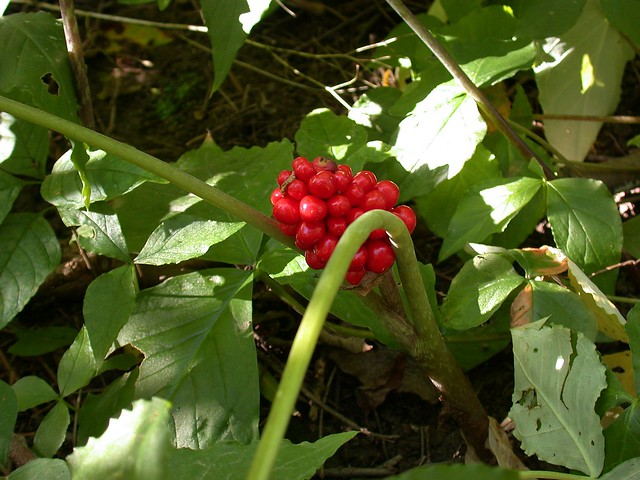
Fruiting jack-in-the-pulpit (Arisaema triphylla)
When I in was in western New York last month, visiting my parents, I took a walk in the woods behind their house--the house where I grew up, another lifetime ago--and spotted something brilliant red in the distance. It turned out to be a jack-in-the-pulpit (Arisaema triphylla) bearing its fruits among the poison ivy and detritus of decades of neglect. Not far away I spotted a patch of them, and near those, another even larger.
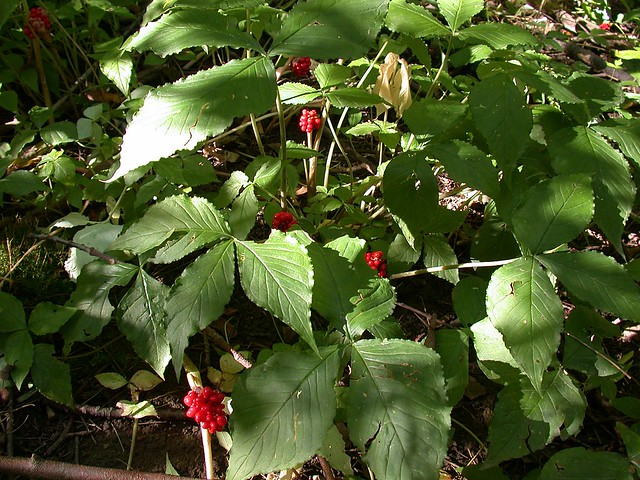
Patch of jack-in-the-pulpit, Arisaema triphylla
This area has been wooded since before my parents had their house built in the 1960's. Sometime before that it was farmland, with the original farmhouse still standing on the other side of the woods, but a bit low-lying and swampy and apparently never very useful for either farming or building, and has remained unused and virtually untouched since then. I got to know that small patch of woods very well when I was a kid, and it was never very interesting. The trees were all young poplars and ash, with a few young white pines, and the understory consisted mostly of poison ivy and common weeds. Spring ephemerals typical of upstate New York woodlands were conspicuously absent and jack-in-the-pulpit, a plant that fascinated me to the point of obsession, didn't grow there. So where had they come from?
The answer is me. As a kid, I loved this plant. I'm not exactly sure why it appealed to me so much, except that it was just so different and odd-looking, and so easy to identify, that when I found it growing in more mature and less-disturbed forest down the street, I dug up a few to bring back. I planted a few myself, under the giant black cherry (Prunus serotina) at the edge of the woods behind our house, but I also remember leaving a paper bag full of them behind the house, losing interest as kids so often do, until my father unceremoniously tossed them into the woods. 40-something years later, they're not only surviving but spreading. They made me happy to see.
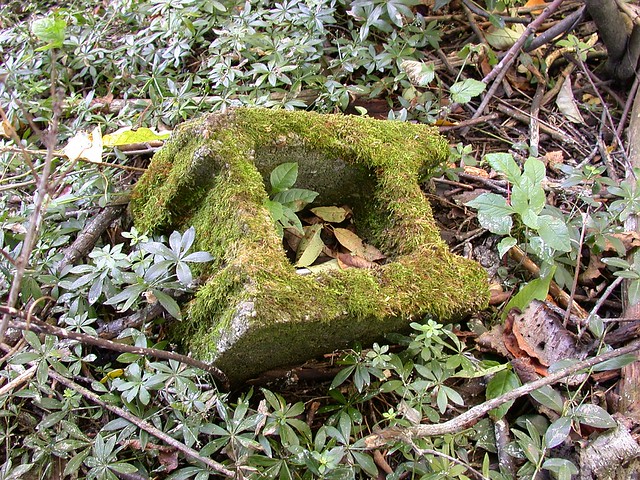
Mossy cinderblock
Today, the woods are a bit more mature, still not terribly interesting (and I had to tread carefully because the poison ivy is still there) but I noted large cushions of moss like those I used to see in the older woods, and a large American basswood (Tilia americana) pushing its way into the canopy. The black cherry that was already huge when I was a kid--and that I used for feeding my cecropia moth caterpillars, because that's the kind of kid I was--is still there. The area has had little development since the 1970's and down the street, the open fields I remember--at the time, just a few years past being used for crops or pasture--have grown up into dense woods. What will the woods behind my parents' house look like in another 40 years? Will they even be there? If so, I hope they will be full of jack-in-the-pulpits.
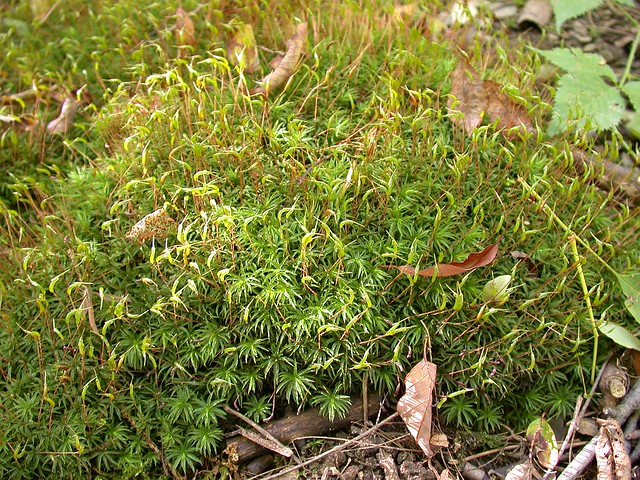
Moss
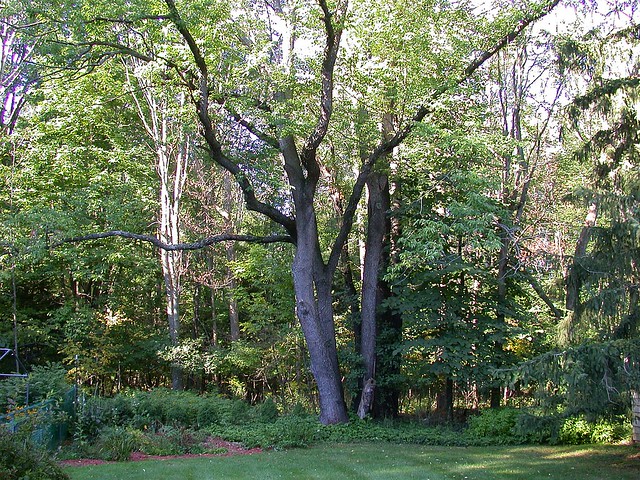
Black cherry (Prunus serotina)
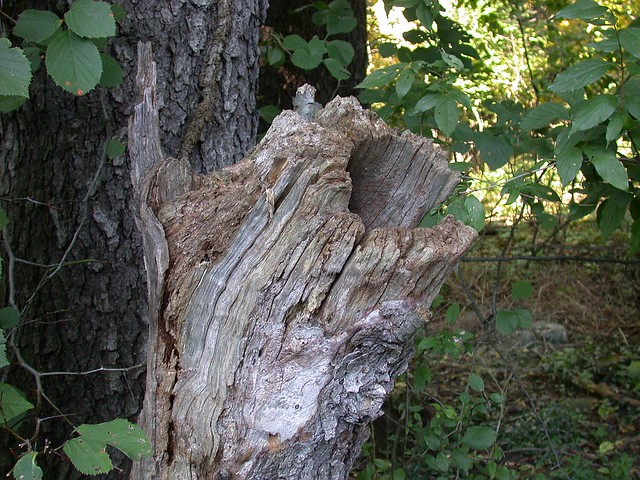
How not to prune a tree, 30 years later

Fascinating insight John, but that cinderblock covered in moss caught my eye the most. Like that it looks decorative.
ReplyDeleteNow if only I could get moss to grow like that in my garden!
Delete